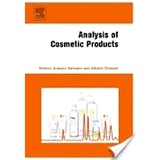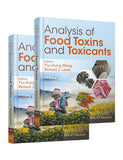Introduction to Modern Liquid Chromatography, 3rd Edition by Snyder
Introduction to Modern Liquid Chromatography, 3rd Edition
High-performance liquid chromatography (HPLC) is today the leading technique for chemical analysis and related applications, with an ability to separate, analyze, and/or purify virtually any sample. Snyder and Kirkland's Introduction to Modern Liquid Chromatography has long represented the premier reference to HPLC. This Third Edition, with John Dolan as added coauthor, addresses important improvements in columns and equipment, as well as major advances in our understanding of HPLC separation, our ability to solve problems that were troublesome in the past, and the application of HPLC for new kinds of samples.
This carefully considered Third Edition maintains the strengths of the previous edition while significantly modifying its organization in light of recent research and experience. The text begins by introducing the reader to HPLC, its use in relation to other modern separation techniques, and its history, then leads into such specific topics as:
- The basis of HPLC separation and the general effects of different experimental conditions
- Equipment and detection
- The column—the "heart" of the HPLC system
- Reversed-phase separation, normal-phase chromatography, gradient elution, two-dimensional separation, and other techniques
- Computer simulation, qualitative and quantitative analysis, and method validation and quality control
- The separation of large molecules, including both biological and synthetic polymers
- Chiral separations, preparative separations, and sample preparation
- Systematic development of HPLC separations—new to this edition
- Troubleshooting tricks, techniques, and case studies for both equipment and chromatograms
GLOSSARY OF SYMBOLS AND ABBREVIATIONS.
1 INTRODUCTION.
1.1 Background Information.
1.2 A Short History of HPLC.
1.3 Some Alternatives to HPLC.
1.4 Other Sources of HPLC Information.
References.
2 BASIC CONCEPTS AND THE CONTROL OF SEPARATION.
2.1 Introduction.
2.2 The Chromatographic Process.
2.3 Retention.
2.4 Peak Width and the Column Plate Number N.
2.5 Resolution and Method Development.
2.6 Sample Size Effects.
2.7 RELATED TOPICS.
References.
3 EQUIPMENT.
3.1 Introduction.
3.2 Reservoirs and Solvent Filtration.
3.3 Mobile-Phase Degassing.
3.4 Tubing and Fittings.
3.5 Pumping Systems.
3.6 Autosamplers.
3.7 Column Ovens.
3.8 Data Systems.
3.9 Extra-Column Effects.
3.10 Maintenance.
References.
4 DETECTION.
4.1 Introduction.
4.2 Detector Characteristics.
4.3 Introduction to Individual Detectors.
4.4 UV-Visible Detectors.
4.5 Fluorescence Detectors.
4.6 Electrochemical (Amperometric) Detectors.
4.7 Radioactivity Detectors.
4.8 Conductivity Detectors.
4.9 Chemiluminescent Nitrogen Detector.
4.10 Chiral Detectors.
4.11 Refractive Index Detectors.
4.12 Light-Scattering Detectors.
4.13 Corona-Discharge Detector (CAD).
4.14 Mass Spectral Detectors (MS).
4.15 Other Hyphenated Detectors.
4.16 Sample Derivatization and Reaction Detectors.
References.
5 THE COLUMN.
5.1 Introduction.
5.2 Column Supports.
5.3 Stationary Phases.
5.4 Column Selectivity.
5.5 Column Hardware.
5.6 Column-Packing Methods.
5.7 Column Specifications.
5.8 Column Handling.
References.
6 REVERSED-PHASE CHROMATOGRAPHY FOR NEUTRAL SAMPLES.
6.1 Introduction.
6.2 Retention.
6.3 Selectivity.
6.4 Method Development and Strategies for Optimizing Selectivity.
6.5 Nonaqueous Reversed-Phase Chromatography (NARP).
6.6 Special Problems.
References.
7 IONIC SAMPLES: REVERSED-PHASE, ION-PAIR, AND IONEXCHANGE CHROMATOGRAPHY.
7.1 Introduction.
7.2 Acid-Base Equilibria and Reversed-Phase Retention.
7.3 Separation of Ionic Samples by Reversed-Phase Chromatography (RPC).
7.4 Ion-Pair Chromatography (IPC).
7.5 Ion-Exchange Chromatography (IEC).
References.
8 NORMAL-PHASE CHROMATOGRAPHY.
8.1 Introduction.
8.2 Retention.
8.3 Selectivity.
8.4 Method-Development Summary.
8.5 Problems in the Use of NPC.
8.6 Hydrophilic Interaction Chromatography (HILIC).
References.
9 GRADIENT ELUTION.
9.1 Introduction.
9.2 Experimental Conditions and Their Effects on Separation.
9.3 Method Development.
9.4 Large-Molecule Separations.
9.5 Other Separation Modes.
9.6 Problems.
References.
10 COMPUTER-ASSISTED METHOD DEVELOPMENT.
10.1 Introduction.
10.2 Computer-Simulation Software.
10.3 Other Method-Development Software.
10.4 Computer Simulation and Method Development.
References.
11 QUALITATIVE AND QUANTITATIVE ANALYSIS.
11.1 Introduction.
11.2 Signal Measurement.
11.3 Qualitative Analysis.
11.4 Quantitative Analysis.
11.5 Summary.
References.
12 METHOD VALIDATION.
12.1 Introduction.
12.2 Terms and Definitions.
12.3 System Suitability.
12.4 Documentation.
12.5 Validation for Different Pharmaceutical-Method Types.
12.6 Bioanalytical Methods.
12.7 Analytical Method Transfer (AMT).
12.8 Method Adjustment or Method Modification.
12.9 Quality Control and Quality Assurance.
12.10 Summary.
References.
13 BIOCHEMICAL AND SYNTHETIC POLYMER SEPARATIONS.
13.1 Biomacromolecules.
13.2 Molecular Structure and Conformation.
13.3 Special Considerations for Biomolecule HPLC.
13.4 Separation of Peptides and Proteins.
13.5 Separation of Nucleic Acids.
13.6 Separation of Carbohydrates.
13.7 Separation of Viruses.
13.8 Size-Exclusion Chromatography (SEC).
13.9 Large-Scale Purification of Large Biomolecules.
13.10 Synthetic Polymers.
References.
14 ENANTIOMER SEPARATIONS.
14.1 Introduction.
14.2 Background and Definitions.
14.3 Indirect Method.
14.4 Direct Method.
14.5 Peak Dispersion and Tailing.
14.6 Chiral Stationary Phases and Their Characteristics.
14.7 Thermodynamic Considerations.
References.
15 PREPARATIVE SEPARATIONS.
15.1 Introduction.
15.2 Equipment for Prep-LC Separation.
15.3 Isocratic Elution.
15.4 Severely Overloaded Separation.
15.5 Gradient Elution.
15.6 Production-Scale Separation.
References.
16 SAMPLE PREPARATION.
16.1 Introduction.
16.2 Types of Samples.
16.3 Preliminary Processing of Solid and Semi-Solid Samples.
16.4 Sample Preparation for Liquid Samples.
16.5 Liquid-Liquid Extraction.
16.6 Solid-Phase Extraction (SPE).
16.7 Membrane Techniques in Sample Preparation.
16.8 Sample Preparation Methods for Solid Samples.
16.9 Column-Switching.
16.10 Sample Preparation for Biochromatography.
16.11 Sample Preparation for LC-MS.
16.12 Derivatization in HPLC.
References.
17 TROUBLESHOOTING.
Quick Fix.
17.1 Introduction.
17.2 Prevention of Problems.
17.3 Problem-Isolation Strategies.
17.4 Common Symptoms of HPLC Problems.
17.5 Troubleshooting Tables.
References.
APPENDIX I. PROPERTIES OF HPLC SOLVENTS.
I.1 Solvent-Detector Compatibility.
I.1.1 UV Detection.
I.1.2 RI Detection.
I.1.3 MS Detection.
I.2 Solvent Polarity and Selectivity.
I.3 Solvent Safety.
References.
APPENDIX II. PREPARING BUFFERED MOBILE PHASES.
II.1 Sequence of Operations.
II.2 Recipes for Some Commonly Used Buffers.
Reference.
Index.
Joseph J. Kirkland, PhD, is Vice President of Research and Development for Advanced Materials Technology, Inc., and coauthor of Introduction to Modern Liquid Chromatography, Second Edition, Practical HPLC Method Development, Second Edition, and Modern Size-Exclusion Liquid Chromatography, Second Edition, all published by Wiley.
John W. Dolan, PhD, is a Principal at LC Resources. He is author of the popular "LC Troubleshooting" column in LCGC magazine and coauthor with Lloyd Snyder of Troubleshooting LC Systems and High-Performance Gradient Elution.


















